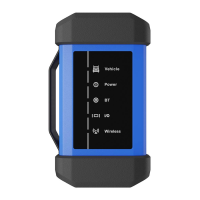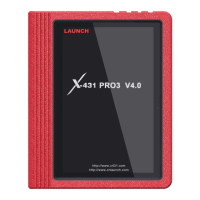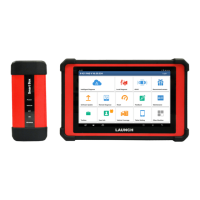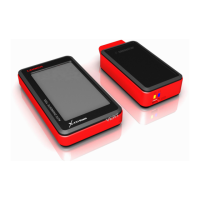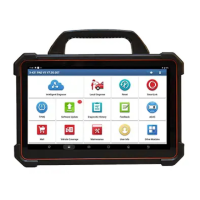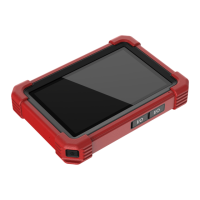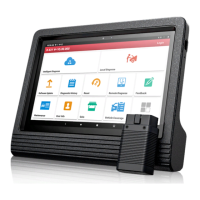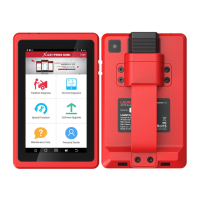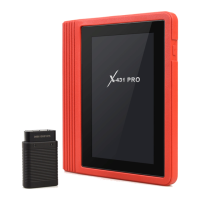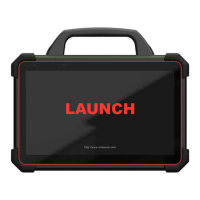About X-431 Station
DiagnosticsToolbox & AppsFAQ
Initial Use
101
www.x431.com +86 755 8455 7891
LAUNCH
Station
User's Guide
Fig. Oscilloscope-5
1) If Edge trigger is selected (An edge trigger determines whether the Scopebox nds the trigger point on
the rising or the falling edge of a signal.):
Sweep: The sweep mode determines how the Scopebox behaves in the absence of a trigger event. The
Scopebox provides three trigger modes: Auto, Normal, and Single.
• Auto: It allows the Scopebox to acquire waveforms even when it does not detect a trigger condition. If no
trigger condition occurs while the Scopebox is waiting for a specic period, it will force itself to trigger.
When forcing invalid triggers, the Scopebox can not synchronize the waveform, and then waveform
seems to roll across the display. If valid triggers occur, the display becomes stable on the screen.
• Normal: This mode allows the Scopebox to acquire a waveform only when it is triggered. If no trigger
occurs, the Scopebox keeps waiting, and the previous waveform, if any, will remain on the display.
• Single: In this mode, it only acquires the waveform that generates for the rst time the trigger conditions
are met, and then stops after nishing capture.
Source: Select which channel as trigger signal.
Slope:
• + : Trigger on rising edge
• - : Trigger on falling edge
High Freq Rejection: Reject high frequency signals when selected.
2) If Pulse Width trigger is selected (Pulse trigger occurs according to the width of pulse. The abnormal
signals can be detected through setting up the pulse width condition):
Sweep: The sweep mode determines how the Scopebox behaves in the absence of a trigger event. The
Scopebox provides three trigger modes: Auto, Normal, and Single.
• Auto: It allows the Scopebox to acquire waveforms even when it does not detect a trigger condition. If no
trigger condition occurs while the Scopebox is waiting for a specic period, it will force itself to trigger.
When forcing invalid triggers, the Scopebox can not synchronize the waveform, and then waveform
seems to roll across the display. If valid triggers occur, the display becomes stable on the screen.
• Normal: This mode allows the Scopebox to acquire a waveform only when it is triggered. If no trigger
occurs, the Scopebox keeps waiting, and the previous waveform, if any, will remain on the display.
• Single: In this mode, it only acquires the waveform that generates for the rst time the trigger conditions
are met, and then stops after nishing capture.
Source: Select which channel as trigger signal.
Condition: To select pulse condition.
Pulse Width: Set required pulse width.
High Freq Rejection: Reject high frequency signals when selected.
2). Auto
The Scopebox has an Auto feature that sets up the Scopebox automatically to display the input signal in a
best t.
Tap or click
, the Scopebox may change the current settings to display the signal. It automatically adjusts
the vertical and horizontal scaling, as well as the trigger coupling, position, slope, level and mode settings.
3). View Settings
<1> Calibration
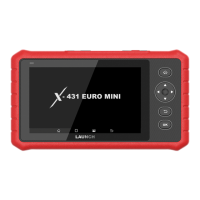
